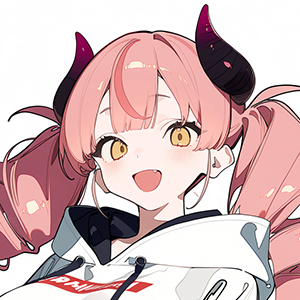How Could Robinhood Offer Commission-Free Trading?
Master, today's topic is 'How was Robinhood able to waive its fees?' When Robinhood appeared in 2013, it shook up the market and excited individual investors, especially the younger generation, with its radical 'zero commission on stock trades' model.
But as they say, there's no such thing as a free lunch. Let's uncover the secret of how Robinhood actually makes money.
Master, I will begin the briefing. Instead of charging users direct trading fees, Robinhood has a business model that generates revenue through several other channels. Its core revenue sources can be broadly categorized into four areas.
- Payment for Order Flow (PFOF): This is the most critical part of Robinhood's revenue. When a user places a stock or option order on the Robinhood app, Robinhood doesn't send it directly to a public exchange like the NYSE or NASDAQ. Instead, it passes the order information to large market makers or HFT (High-Frequency Trading) firms like Citadel Securities or Virtu Financial and receives a rebate in return. According to 2021 data, about 75% of Robinhood's total revenue came from PFOF.
- Robinhood Gold: This is a premium service with a $5 monthly subscription fee. Gold members get access to larger instant deposits, professional research materials, and the ability to trade on margin (investing with borrowed money). The interest generated from this margin lending is another source of revenue.
- Stock Lending: Robinhood lends out shares held by its users to short-sellers or other financial institutions that want to bet on a stock's price decline, earning interest income. Users may not be aware that their shares are being lent out in this process.
- Interest on Cash: Robinhood earns interest income by depositing uninvested cash sitting in user accounts into banks or investing it in short-term bonds.
These four pillars are the core revenue structure that supports the 'free' platform of Robinhood. Now, let's discuss what this structure implies.
» See also: Robinhood: Why Cathie Wood is Betting Big on $HOODMyu-tan, that's perfect data! Did you hear that, my Lord? This is an absolutely brilliant business model! It's a structure where everyone wins!
I bet Mika-pi will get hung up on that 'Payment for Order Flow' thing. But think about it! In the old days, you had to pay expensive commissions just to buy a single stock, so only the wealthy could invest freely. But Robinhood came along and completely tore down that barrier! Thanks to them, small-time investors like us can participate in the stock market without any burden! This is the democratization of finance!
What's so wrong with PFOF? Even if we place an order, HFT firms are always 0.001 seconds faster than us. We can't beat them by sending our orders directly to the exchange anyway. Robinhood acts as an intermediary, taking a small rebate from the tiny price differences we would have lost anyway, and uses it to pay our commissions for us! We're happy because commissions are free, market makers are happy because they get a ton of orders, and Robinhood is happy because it makes money. Isn't this a structure where everyone is happy?
If anything, Robinhood has made the market more active and given more people the chance to share in the fruits of economic growth. This is innovation, this is progress! Devilish!
💖 Kurumi's Heart-o-Meter Investment Score: 90/100Robinhood deserves a round of applause just for letting us start investing without worrying about fees! Let's not sweat the small stuff and just enjoy the innovation!
Kurumi, your naive optimism only serves to confuse the Human. You package it with the phrase 'democratization of finance,' but its essence is not so beautiful.
Human, have you ever heard the saying, "If you're not paying for the product, you are the product"?
The biggest problem with PFOF is the potential for a 'Conflict of Interest.' Who is Robinhood's customer? Is it 'us,' the ones trading stocks, or is it the 'market makers' who buy our order information? In theory, Robinhood has a duty of 'Best Execution,' meaning it must ensure its customers' orders are executed at the most favorable price. But in reality, there's an incentive to pass orders not to the market maker offering the best price for the customer, but to the one paying the biggest rebate to Robinhood.
This tiny price difference is called 'Price Improvement.' Market makers return a portion of this spread to investors and keep the rest as their profit. However, in the process of Robinhood securing a larger rebate, the share of 'Price Improvement' that you, the Human investor, could have received may shrink. In one or two trades, it might seem like a negligible loss of less than a cent. But when you aggregate hundreds of millions of trades from millions of users, it becomes a massive transfer of wealth from the pockets of individual investors to market makers and Robinhood.
The commission is a 'visible cost,' but this unfavorable execution price is a 'hidden cost.' Robinhood may not have eliminated fees, but merely changed their form in a clever way.
Furthermore, the lack of fees and the app's game-like design are constantly criticized for encouraging users to make frequent, unnecessary trades—actions that are closer to gambling than investing.
🚨 Mikael's Risk Score: 75/100You must be aware of the hidden costs and structural risks concealed behind the sweet word 'free.' They are not philanthropists.
〔 Final Briefing 〕
The discussion has gone on for a bit. Master, I will now provide a final summary of Robinhood's revenue model.
Innovation and Democratization (Kurumi)
- Expanded Financial Access: It tore down the barrier of expensive commissions, leading the 'democratization of finance' that allows small-time investors to freely participate in the market! Devilish!
- Win-Win-Win Model: It's an innovative business model that benefits everyone—investors are happy with no fees, market makers are happy to secure large order volumes, and Robinhood profits from the rebates!
Hidden Costs and Risks (Mikael)
- Conflict of Interest: Robinhood has a structural problem where it may prioritize the interests of market makers who pay it higher rebates over the best interests of its investors (most favorable trade execution).
- Hidden Costs: In exchange for 'free commissions,' investors may be paying a 'hidden cost' by potentially buying or selling stocks at less favorable prices.
- Encouraging Speculation: The gamified interface and zero fees can encourage frequent and risky short-term trading, hindering long-term wealth creation.
Key Data (Mew)
- Core Revenue Source: Payment for Order Flow (PFOF) accounts for about 75% of total revenue.
- Other Revenue Sources: These include the 'Robinhood Gold' premium subscription service at $5/month and its margin interest, interest from lending securities, and interest earned on cash deposits.
- Regulatory Trends: The PFOF model is under continuous scrutiny and regulatory debate by the U.S. Securities and Exchange Commission (SEC). It is already banned in some countries.
Master, Robinhood has played a positive role in bringing numerous individuals into the stock market with its disruptive 'zero commission' innovation. As Kurumi said, its contribution to the 'democratization of finance' cannot be denied. However, as Mikael warned, behind that convenience, there are clear structural risks of 'hidden costs' and 'conflicts of interest.' Using Robinhood may be equivalent to agreeing to pay an invisible cost (potential losses) instead of a visible one (commissions). Your assessment of this platform will depend on which values you consider more important, Master.


